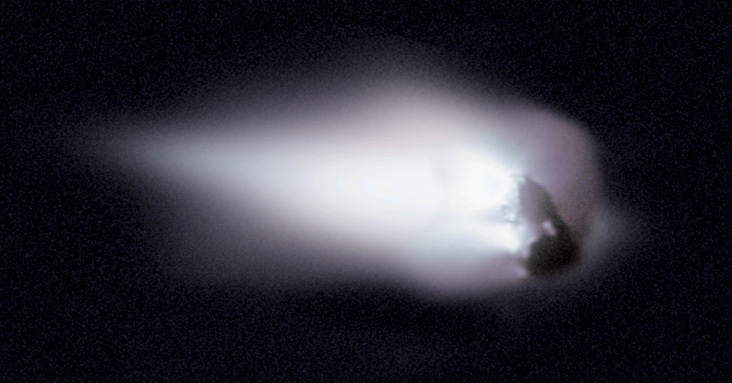
This week in What’s Up is another meteor shower, the Orionids. This meteor shower is highest in the sky at dawn, typical for meteor showers. It runs all the way through October and into early November, peaking in late October. Unfortunately, the full moon will wash out most of the meteors this year at their peak.
The Orionids typically produce a few dozen meteors an hour, unlike the more spectacular meteor showers of the year, and that is in ideal conditions at a dark site. Because of the full moon, you will see much fewer meteors than in other years. Still, it’s worth trying to look for them.
The apparent point in the sky where the meteors come from, the radiant, is in the constellation Orion, giving the shower its name. To find the radiant for the Orionids, first find the Orion Constellation near Sirius, the brightest star in the sky. Follow Sirius up and to the right a good distance until you see the red star Betelgeuse, which hasn’t exploded yet as of this recording. Further up are two more dim stars in the left hand of Orion. Near these two stars is the radiant for the Orionids.
We’re going to reiterate our advice from last week’s story on the Draconids. The best way to see a meteor shower is with the unaided eye, the widest field of view you can get. Be sure to let your eyes get well adjusted to the dark; we don’t recommend using a planetarium app on your phone because even the red light function will impact your dark adaption. You can download a map from a link at our website and print it out to bring with you in the field. Use a proper red light flashlight to see the map when you’re out. You can get one from Amazon using our affiliate link and support our show while you’re at it. A reclining chair, or hammock, may also be helpful for remaining comfortable for hours of looking for meteors.
If you want to try to take pictures of this meteor shower, the best way to do that is to use an interchangeable lens camera with a wide-angle lens, at least 20mm, wider if possible. Mount your camera on a tripod and take very long exposures using bulb mode and a remote shutter release cable (but not an app on your phone because you want to preserve your night vision). You might capture a few meteors.

The comet that produces the Orionid meteor shower is the famous comet 1P/Halley. It was observed thousands of years ago in 240 BCE. However, Edmund Halley was the first to make measurements of comets and identify that one comet, in particular, made several visits; it wasn’t a different comet every time like was thought. He made a prediction for this comet’s next appearance. That appearance happened when he predicted, and as he had passed away at that point it was named in his honor as the first known periodic comet.
The next time Comet Halley will make a close approach to the Sun and be visible from Earth is July 27, 2061. The comet’s closest-ever approach to the Earth was back in 887. Its apparent magnitude was as bright as Venus, but because the comet is big and very dark (what we call a low albedo), it was in reality much dimmer.
Comet Halley is one of the most studied comets. An international fleet of spacecraft including two Japanese spacecraft, two Soviet spacecraft, a European spacecraft, and the International Cometary Explorer from NASA and several collaborators, which we mentioned last week, flew by the comet in 1986, observing it from multiple angles.
And while you cannot see the comet itself any time soon, you can lay outside and see some of the dust that that comet has left behind. So go outside and look up. Make sure to stay warm, everyone!
More Information
Orionid meteor shower: All you need to know (EarthSky.org)
1P/Halley (NASA)




 Join the Crew!
Join the Crew!
 Escape Velocity Space News
Escape Velocity Space News
0 Comments